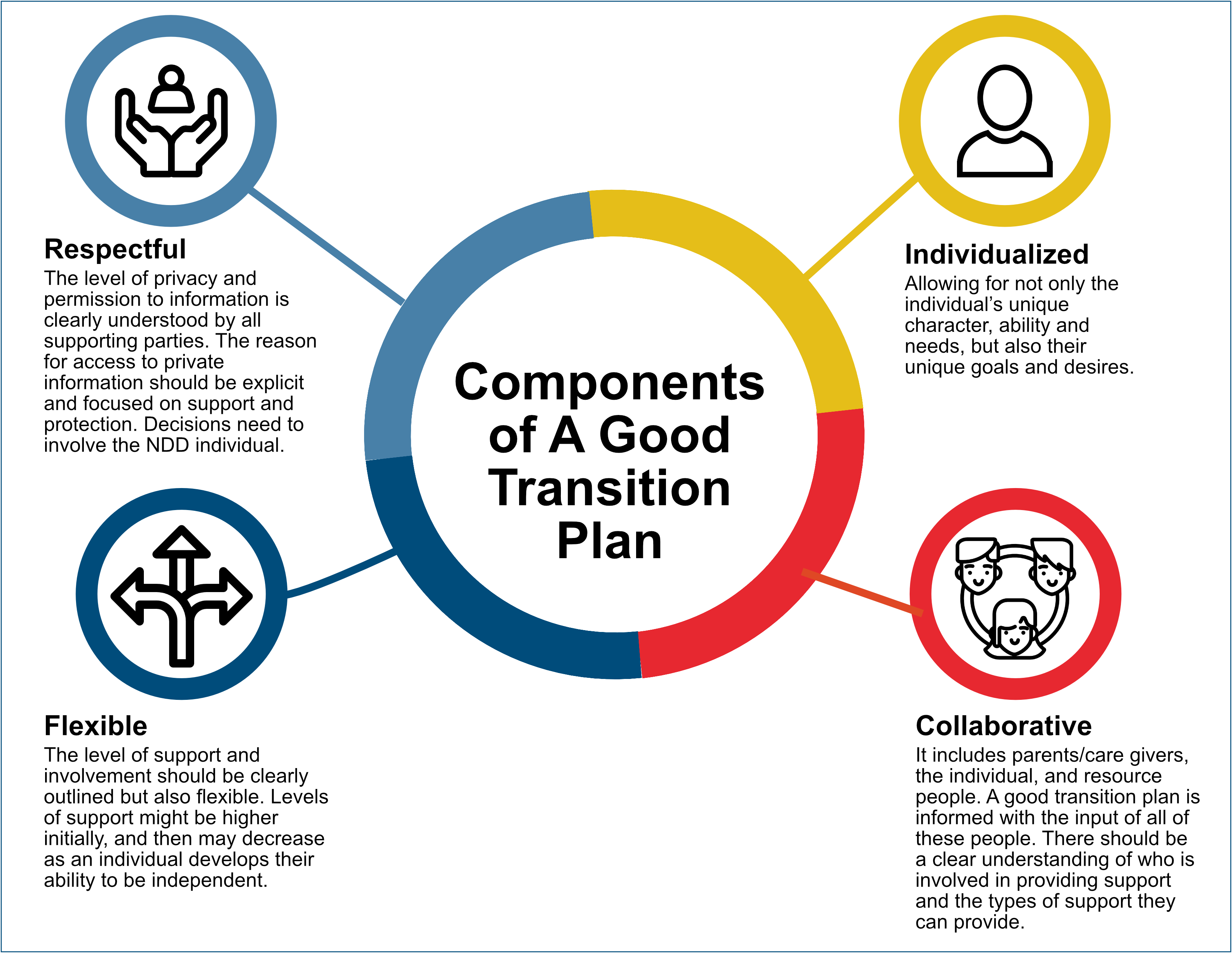Here is a diagram illustrating the components of a good transition plan.

Transition Plans for Adults with NDD Should Address:
Training and support for daily living skills so that adults are prepared to live as independently as possible with a focus on quality of life.
Daily routines, programs, education and supports that promote an active lifestyle with recreational and personal interests that contribute to overall well-being.
Career development that helps adults make meaningful
contributions and and assists in the achievement of their goals and dreams. Such plans should include training and education, coaching and support to gain employability skills, and job search and advisors to support understanding work situations as they arise.
Autonomy involves the ability to make one’s own choices, and be accountable to those choices. Individuals with NDD benefit from learning how to analyze options and possible outcomes, and focus on the long term rather than immediate future. A good transition plan builds in opportunities
to make choices, and advisors to help adults analyze the consequences of their choices.
Self advocacy is to be able to stand up for their wants, needs and rights. Self advocacy requires both the skill and security/sense of safety to ask for these core elements. A
transition plan should address support and training to read and respond assertively to social situations.
Safety considerations. It is important to note that, even as adults, individuals with NDD are vulnerable to being underestimated, undervalued,
taken advantage of, bullied, or physically and sexually victimized. Adults with NDD often require the ongoing support of advisors to understand their rights, how to advocate for themselves, and determine when it is appropriate to gain the support of others to
advocate for them.
Independence is the ability to take part in the recreational, leisure and occupational opportunities of their choice. Building a healthy, creative adult support network helps an adult with NDD to be challenged, optimally care for their own needs, connect to their community, and express their unique interests and abilities.
Scaffolding – Creating a Supportive Structure
Creating opportunities and supports for a young adult to independently continue their growth and learning is sometimes
called scaffolding. Building a transition plan is akin to creating a scaffold that allows individuals with NDD to reach their height of independence and wellness. The scaffold is made up of a collaboration of individuals and community networks. The amount
of supportive structure depends on the need of the individual and varies over time.
Effective transition plans address the individual's strengths, speak to their desired level of autonomy, is mindful of the potential to learn new strengths, and considers that supports may be reduced as a person gains experience. Transition plans incorporate shifts for both parents and their young person with NDD.